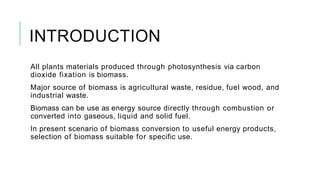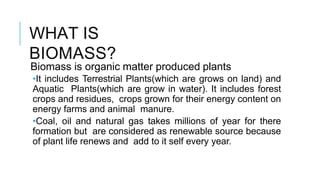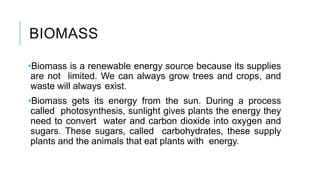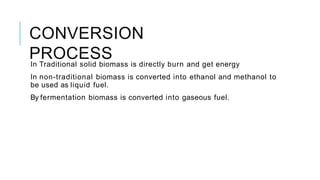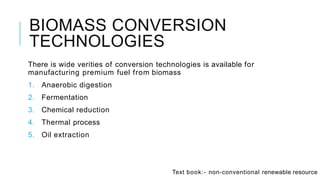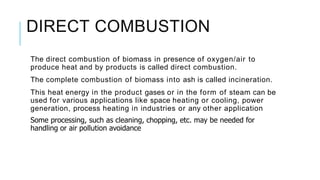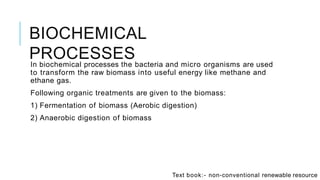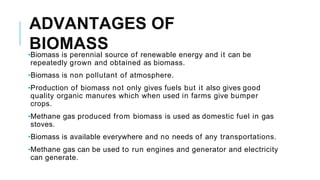Biomass refers to organic matter produced by plants and can be used as a renewable energy source. There are various types of biomass including wood/agricultural products, solid waste, landfill gas, ethanol, and biodiesel. Biomass can be converted into useful energy through direct combustion or thermo-chemical, biochemical, and other processes. Common conversion methods include anaerobic digestion of wet biomass to produce biogas, gasification and pyrolysis of dry biomass through thermal processes, and fermentation to produce ethanol or methane.

